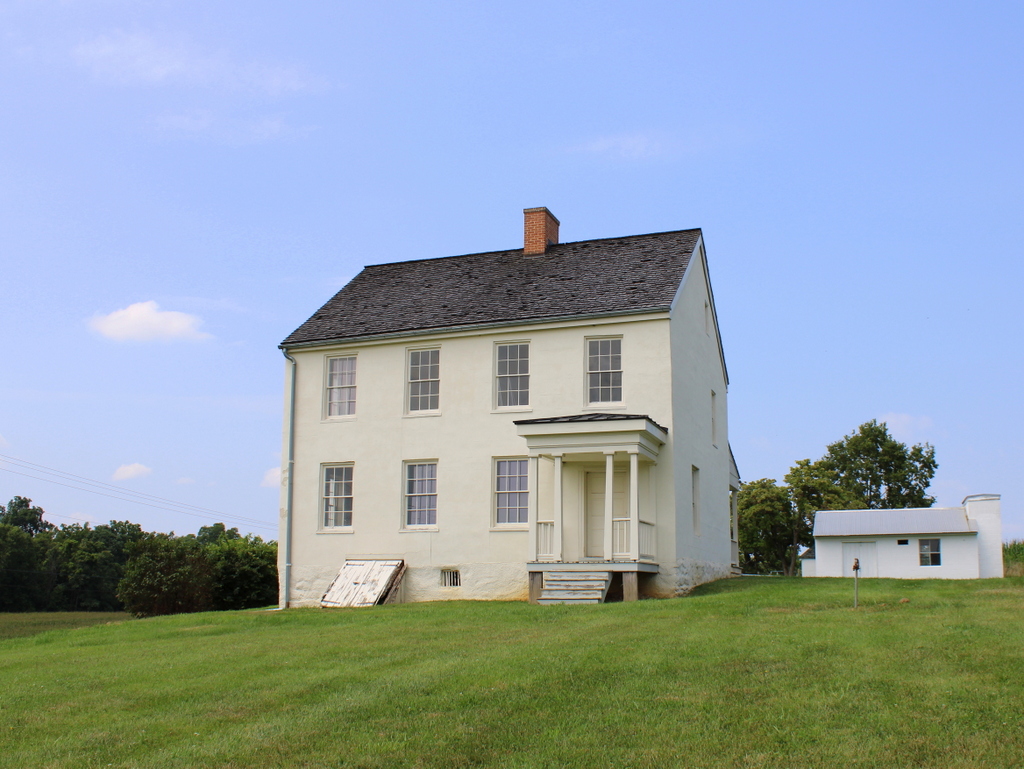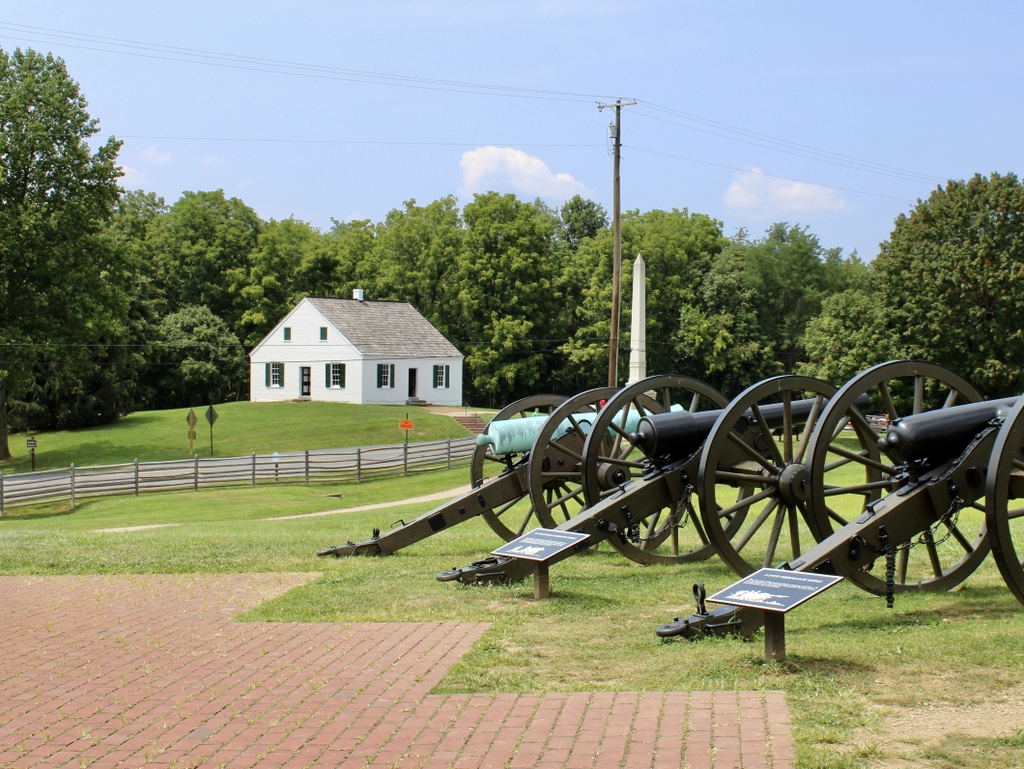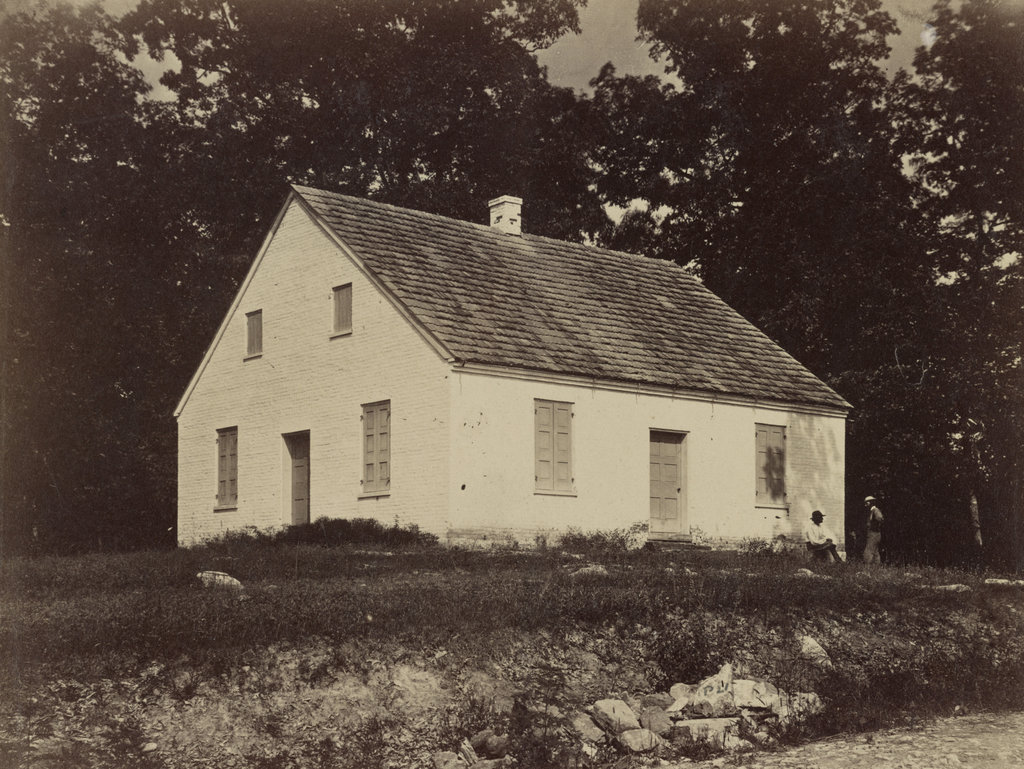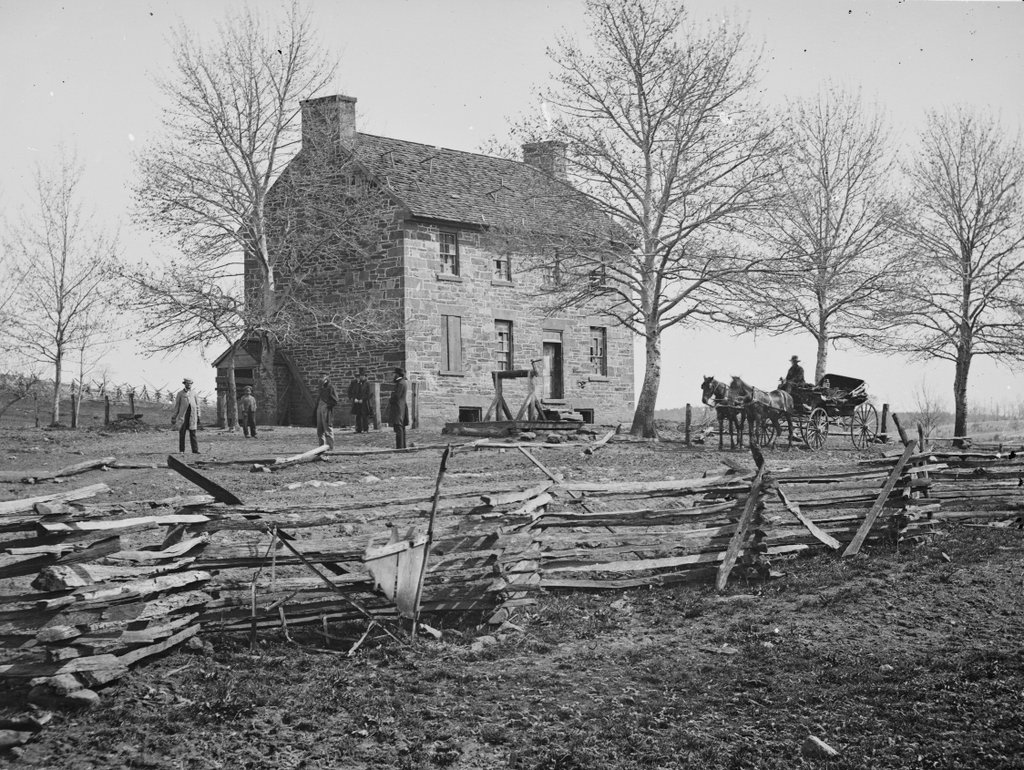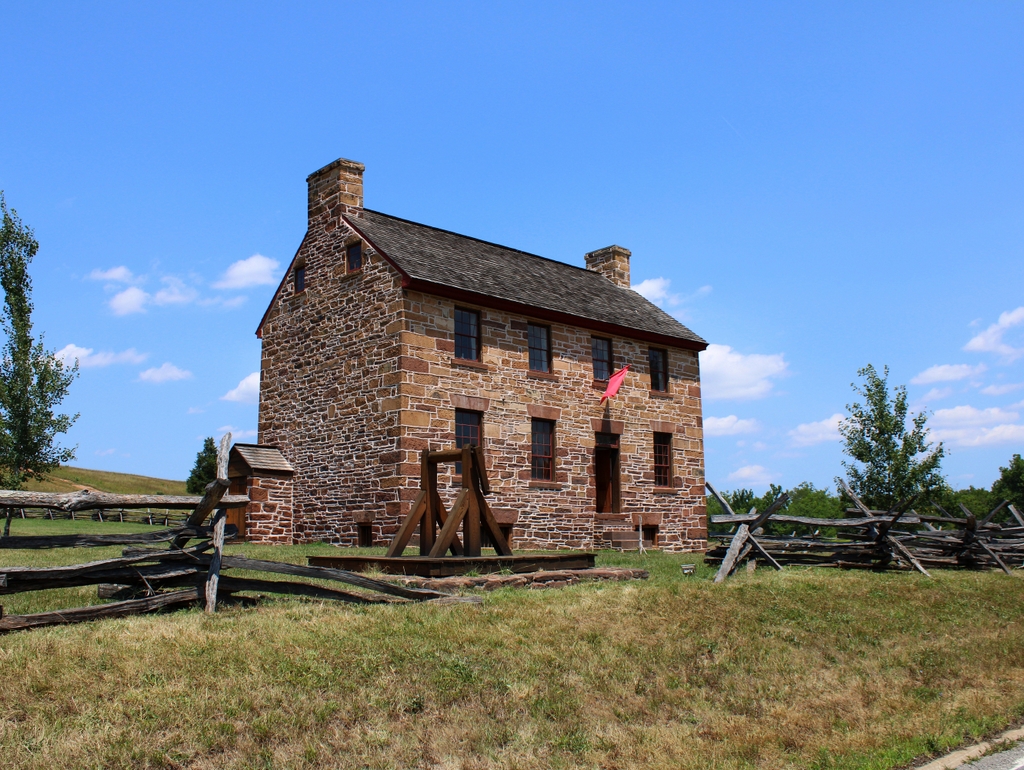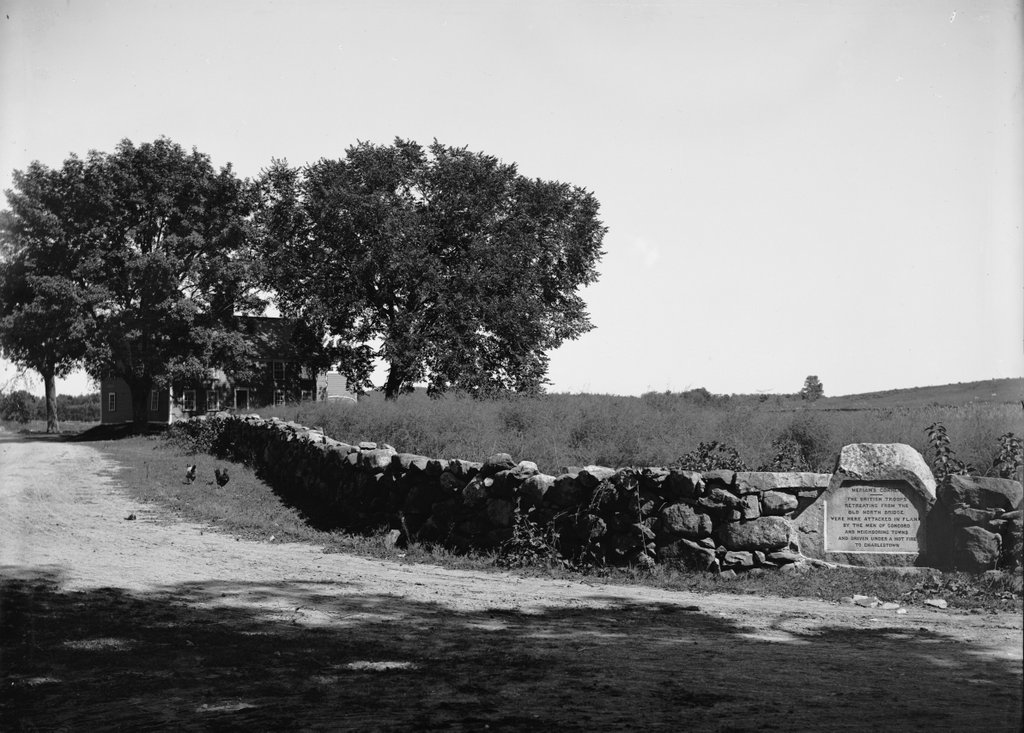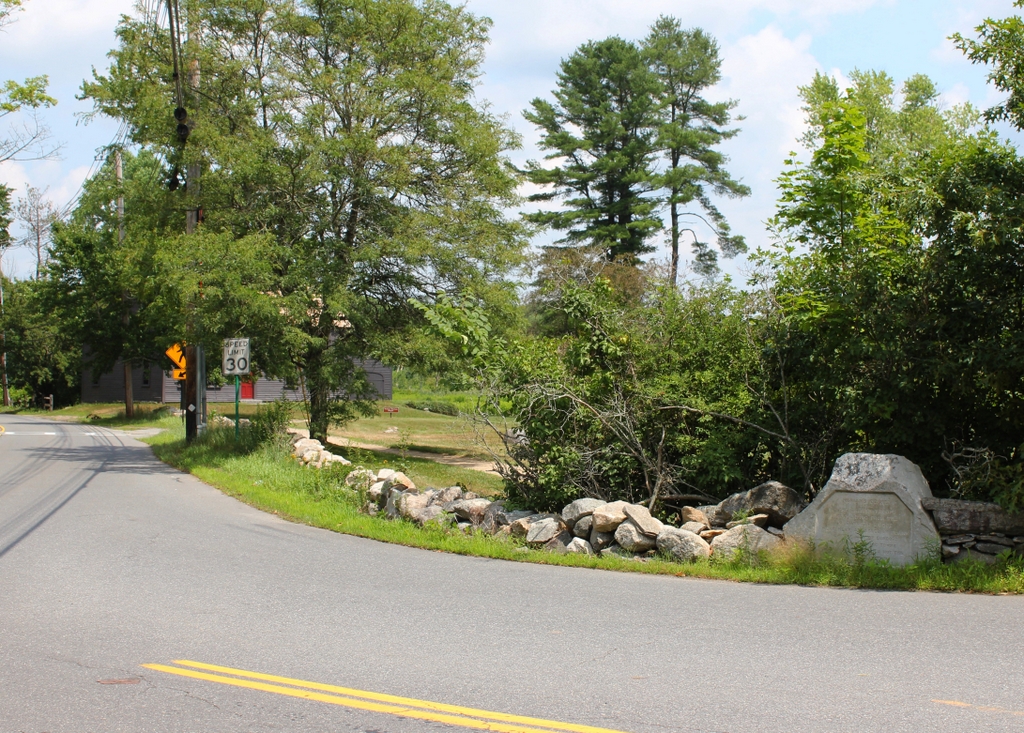Dead Confederate soldiers in the Bloody Lane at the Antietam battlefield in Sharpsburg, in September 1862. Photographed by Alexander Gardner; image courtesy of the Library of Congress, Civil War collection.
The scene in 2021:
The Battle of Antietam was fought on September 17, 1862, and it remains the bloodiest single day in the history of the U.S. military, with over 3,500 killed and over 17,000 wounded during the battle. Many of these casualties occurred here on this road, which became the main focal point of the battle during the midday period of the fighting.
At the start of the battle, the Confederates had arranged themselves in a defensive position around the town of Sharpsburg, Maryland. This was a part of General Robert E. Lee’s first major offensive campaign into northern territory, and he hoped that a successful invasion would weaken the Union’s resolve to fight. Opposing Lee was the Army of the Potomac under Union General George B. McClellan, and he began his attack on the Confederate forces in the early morning hours of September 17.
The Union attack initially concentrated on the Confederate left flank, in the vicinity of the Dunker Church. However, this advance ultimately stalled. Later in the morning, Union efforts shifted to the middle of the Confederate line. Here, Confederate soldiers under General Daniel H. Hill were positioned in the Sunken Road, a road that had been worn down by many years of traffic and weathering. This made it ideal as a trench, and Confederates also stacked up fence rails along the road as a further barricade.
The ensuing fight was some of the fiercest of the battle, and in some ways it was a preview of the trench warfare that would later appear in World War I. Despite being heavily outnumbered, Hill’s soldiers fended off repeated waves of Union assaults. Finally, in the early afternoon, Union forces managed to break through the defenses here at the Sunken Road, forcing the Confederates to fall back. However, the Union had sustained such heavy losses in the fighting that McClellan was unwilling to seize on this opportunity to strike a decisive blow at the Confederate army.
Much of this hesitancy was due to McClellan’s tendency to be overly cautious. As was often the case, he vastly overestimated the size of Lee’s army, believing that Confederate forces vastly outnumbered Union forces when in reality the opposite was true. He also failed to develop a coordinated plan of attack, instead opting for a piecemeal approach with only a small portion of his army engaged at any given time, making it easy for the outnumbered Confederates to defend against them. And, when the Union had finally gained the Sunken Road after hours of hard-fought combat, McClellan became unwilling to commit his reserve troops to an aggressive assault that he feared could lead to defeat.
In reality, the Confederates were in an extremely vulnerable state following the Sunken Road portion of the battle, and a more aggressive approach could have turned Antietam into one of the greatest Union triumphs of the war. Instead, it was nearly a draw, with the Union only able to claim victory because, at the end of the day’s fighting, Lee abandoned his position and returned south. But even then, McClellan faced criticism for failing to pursue Lee’s army and trap them in northern territory. It marked the end of his career as a general, with Lincoln dismissing him less than two months later.
In the aftermath of the battle, photographer Alexander Gardner arrived here at the scene several days later, and began capturing images of the carnage. The Civil War was the first major war to be extensively documented with photographs, which allowed the general public to see the true realities of the war. This photograph at the top of this post is one of the most iconic images of the battle, and it shows a number of dead Confederate soldiers lying alongside each other in their makeshift trench. In total, about 5,500 soldiers on both sides were killed or wounded here at the Sunken Road, which came to be known after the battle as the Bloody Lane.
Aside from Gardner’s photograph, one of the most famous descriptions of the scene here was provided by war correspondent Charles Carleton Coffin, who wrote:
The hillside was dotted with prostrate forms of men in blue, but in the sunken road, what a ghastly spectacle! The Confederates had gone down as the grass falls before the scythe. They were lying in rows, like the ties of a railroad; in heaps, like cord-wood, mingled with the splintered and scattered fence rails. The terrible volley had flamed in their faces, more deadly than the simoon of the desert. Words are inadequate to portray the scene. There were prostrate forms, that had been vigorous with resolute life, and the next moment were motionless forever, resolution and energy still lingering in the pallid cheeks, in the set teeth, the gripping hand. I recall a soldier with the cartridge between his thumb and finger, the end of the cartridge bitten off, and the paper between his teeth when the bullet pierced his heart, and the machinery of life—all the muscles and nerves—came to a standstill. A young lieutenant had fallen while to trying to rally his men; fixed determination was visible in every line of his face. His hand was still firmly grasping his sword. I counted fourteen bodies lying together, literally in a heap, amid the corn rows on the hillside. The broad green leaves were sprinkled and stained with blood.
In the years that followed, many major battlefields became sites of monuments to the soldiers who fought here. Most were dedicated in the late 19th and early 20th centuries, in order to honor the aging veterans and their fallen comrades. Here at Antietam, nearly all of the monuments are for Union states or regiments, including the one that stands in the distance on the left side of the scene. It memorializes the 132nd Pennsylvania Volunteer Infantry Regiment, which had 30 men killed, 114 wounded, and 8 missing here at Antietam, and it was dedicated here in 1904.
Today, aside from the presence of the monument, there is no visual evidence in this scene of the horrors that Alexander Gardner had captured in the first photograph. The Bloody Lane has been maintained in its wartime appearance, and the only other sign of modernity here is the observation tower, which is partially visible in the distance behind the monument. The Bloody Lane, along with the surrounding battlefield, is now owned by the National Park Service, and it is one of the major landmarks here at the Antietam National Battlefield.




